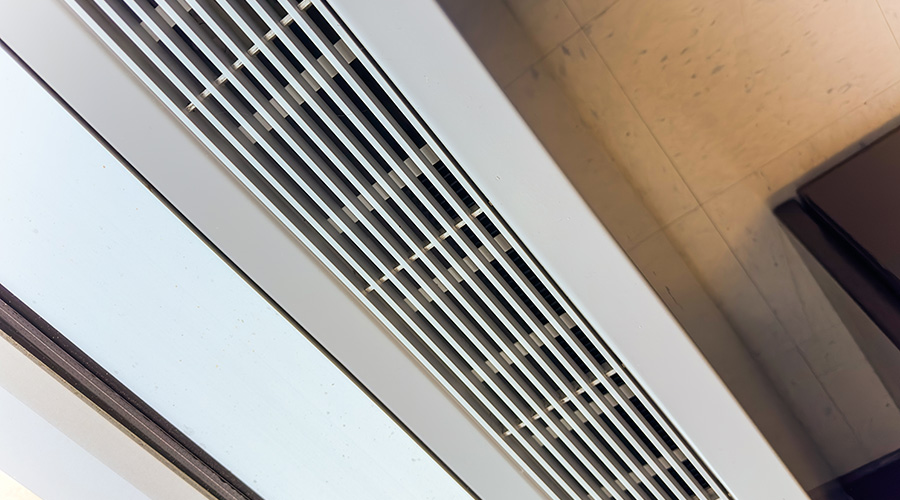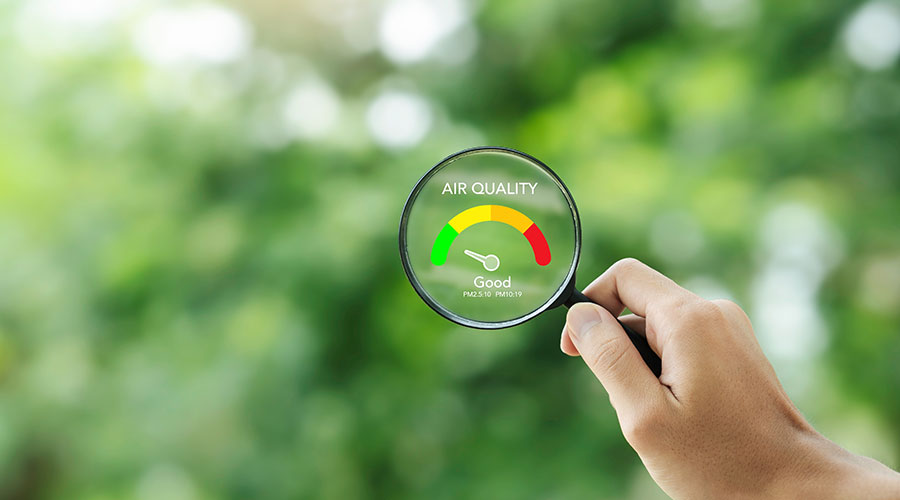HVAC Maintenance Strategies to Ensure Healthy IAQ
Indoor air quality (IAQ) is vital to the health of a building and its occupants, and it can impact productivity and the bottom line. Poor IAQ can lead to irritation, allergies, asthma, reproductive and developmental problems, and cancer.
Following a few rules can help maintenance and engineering managers maintain healthy indoor environments in commercial and institutional buildings. Proper HVAC system maintenance and reducing the amount of indoor air contaminants through source control are the most basic steps to ensure healthy buildings and the well-being of occupants and visitors.
IAQ Maintenance Strategies
HVAC systems play a significant role in promoting IAQ and are the primary method for providing thermal comfort, removing or diluting the byproducts of occupancy, and providing proper building pressurization. These systems also are the primary transport mechanisms for indoor contaminants and might become a source of IAQ complaints if neglected.
Because of the impact HVAC systems can have on a building’s indoor environment, it is important for technicians to adhere to proper maintenance practices. Technicians can perform a handful of procedures to keep systems working properly and free from contaminants that might negatively impact a building’s IAQ.
These procedures include: changing filters; cleaning coils; flushing the condensate system; lubricating moving parts; replacing components designed to wear out at appropriate intervals — sealed bearings and drive belts; and inspecting for signs of damage or premature equipment failure.
Failure to perform these maintenance practices can lead to mechanical failures or fouling of the equipment. Examples of failures include: stuck dampers; blocked evaporator or condenser coils; malfunctioning control components; clogged condensate drains; ineffective pipe insulation; and disconnected ducts or blocked strainers. Lack of proper maintenance also can lead to reduced cooling capacity and airflow, which might result in poor ventilation and thermal-comfort issues.
Good testing, adjusting, and balancing procedures are important tools in combating equipment failures or poor operation. Implementing these procedures when new construction and renovation projects are completed can help verify equipment operation, establish adequate air and water flows, and determine the general adherence of the mechanical systems to the intended performance.
Technicians can perform testing, adjusting and balancing procedures on existing systems as well to verify current operation meets the original design intent. Improper testing, adjusting, and balancing procedures can leave managers with poor or incomplete information and can cause technicians to overlook problems, such as inactive controls, duct leaks, missing air devices, or malfunctioning equipment.
Replacing filters at appropriate intervals also is important for healthy IAQ. Excessive dust loading on aging filters can lead to reduced airflow, and extreme loading can cause a filter to collapse and release captured dust. Replacing filters too often also can prevent filters from reaching their design efficiencies. As a filter loads, the efficiency will increase as particulate matter is captured more quickly.
Related Topics:












